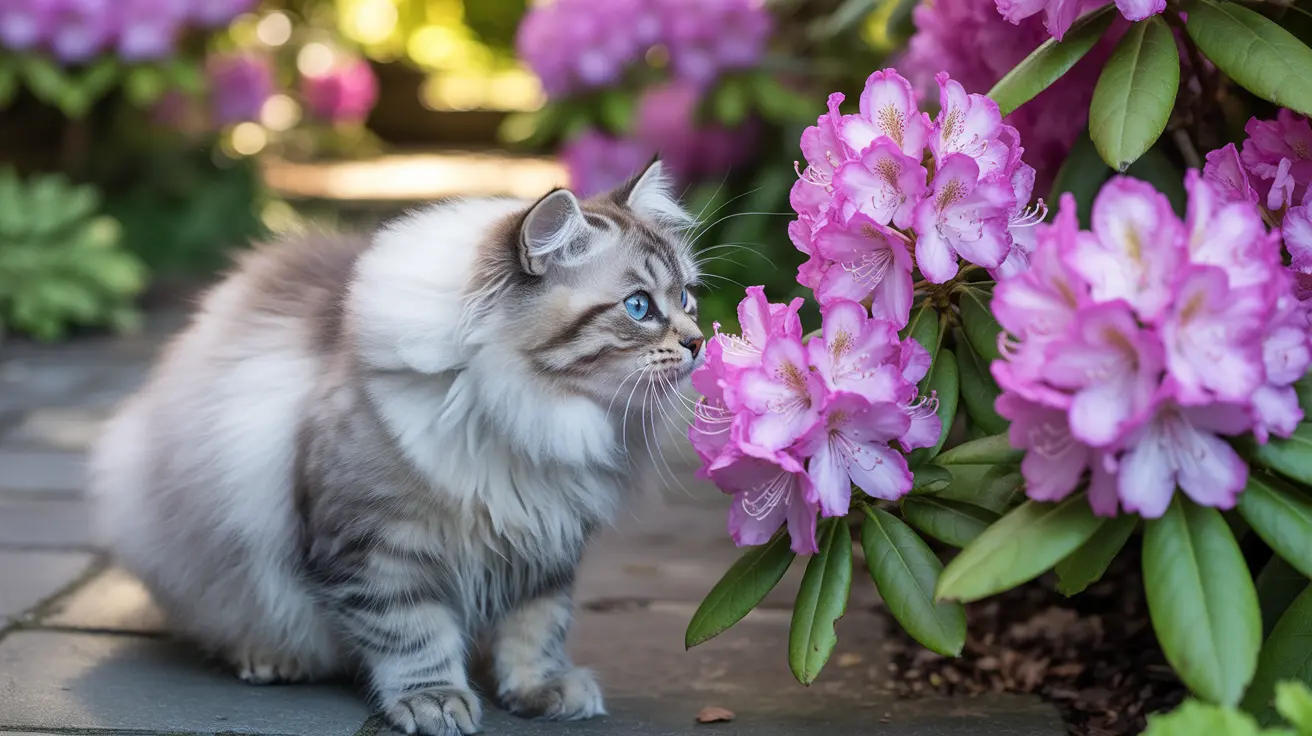Understanding the Dangers of Rhododendrons to Cats
Rhododendrons are beautiful flowering plants commonly found in gardens and landscapes across America. However, these ornamental plants pose a serious health risk to our feline companions. Every part of the rhododendron plant contains dangerous compounds called grayanotoxins, which can cause severe poisoning in cats even in small amounts.
As a responsible cat owner, understanding the risks associated with rhododendrons is crucial for keeping your pet safe. This comprehensive guide will explore why these plants are toxic, what symptoms to watch for, and how to protect your cat from accidental poisoning.
How Toxic Are Rhododendrons to Cats?
Rhododendrons are considered highly toxic to cats, with even minimal exposure potentially causing serious health issues. The grayanotoxins present in these plants can affect a cat's body after ingesting as little as 0.2% of their body weight in plant material. For perspective, this means a 10-pound cat could experience poisoning from consuming just 0.03 ounces of rhododendron.
Identifying Symptoms of Rhododendron Poisoning
When a cat ingests any part of a rhododendron plant, symptoms typically develop within 1-12 hours. Common signs include:
- Excessive drooling
- Severe vomiting and diarrhea
- Loss of appetite
- Weakness and lethargy
- Irregular heartbeat
- Difficulty breathing
- Loss of coordination
- Seizures in severe cases
Emergency Response and Treatment
If you suspect your cat has ingested rhododendron, immediate veterinary care is essential. Treatment typically includes:
- Stabilization of vital signs
- Intravenous fluid therapy
- Cardiac monitoring
- Supportive care for symptoms
- Administration of anti-seizure medications if needed
Prevention and Safety Measures
The best way to protect your cat from rhododendron poisoning is through prevention:
- Remove all rhododendron plants from your home and garden
- Create cat-safe garden spaces using non-toxic plants
- Supervise outdoor time for your cat
- Keep indoor cats away from cut flowers or potted plants that might contain rhododendron
Frequently Asked Questions
Are all parts of the rhododendron plant poisonous to cats, or only certain parts?
All parts of the rhododendron plant, including flowers, leaves, stems, and roots, are toxic to cats. The grayanotoxins are present throughout the entire plant, making every component potentially dangerous.
What symptoms should I watch for if my cat has ingested rhododendron?
Watch for drooling, vomiting, diarrhea, weakness, difficulty breathing, irregular heartbeat, and loss of coordination. In severe cases, seizures or collapse may occur.
How quickly do symptoms of rhododendron poisoning appear in cats after ingestion?
Symptoms typically appear within 1-12 hours after ingestion, with most cats showing signs around 6 hours after exposure.
What immediate actions should I take if my cat eats rhododendron?
Contact your veterinarian or pet poison control immediately. Do not wait for symptoms to appear, as early intervention is crucial for successful treatment.
Can rhododendron poisoning be fatal to cats, and is veterinary treatment always necessary?
Yes, rhododendron poisoning can be fatal if left untreated. Veterinary treatment is always necessary due to the severity of potential complications and the need for professional supportive care.
Conclusion
Rhododendron poisoning represents a serious threat to cats, but with proper awareness and preventive measures, you can protect your feline friend from exposure. If you suspect your cat has ingested any part of a rhododendron plant, don't hesitate to seek immediate veterinary care. Remember, when it comes to toxic plants, prevention is always better than treatment.






